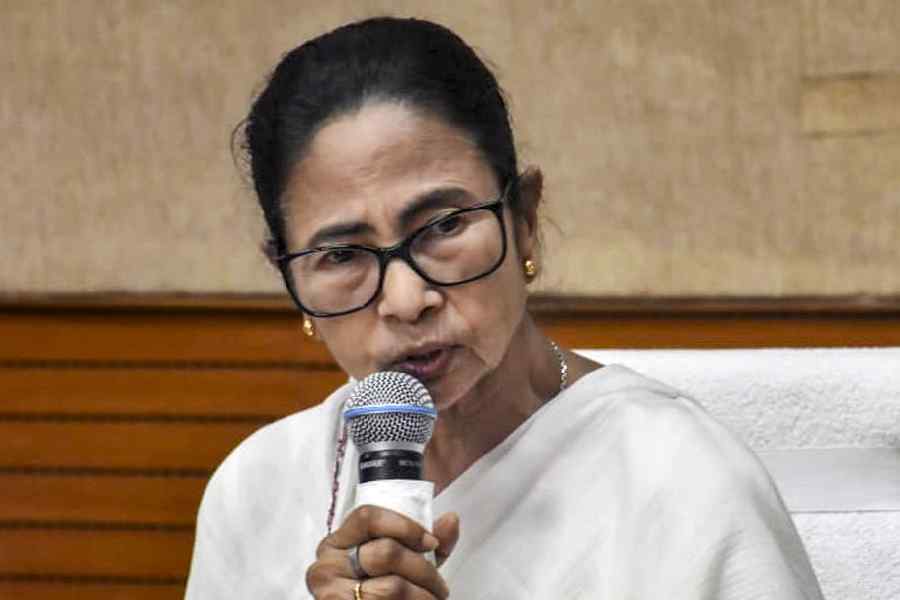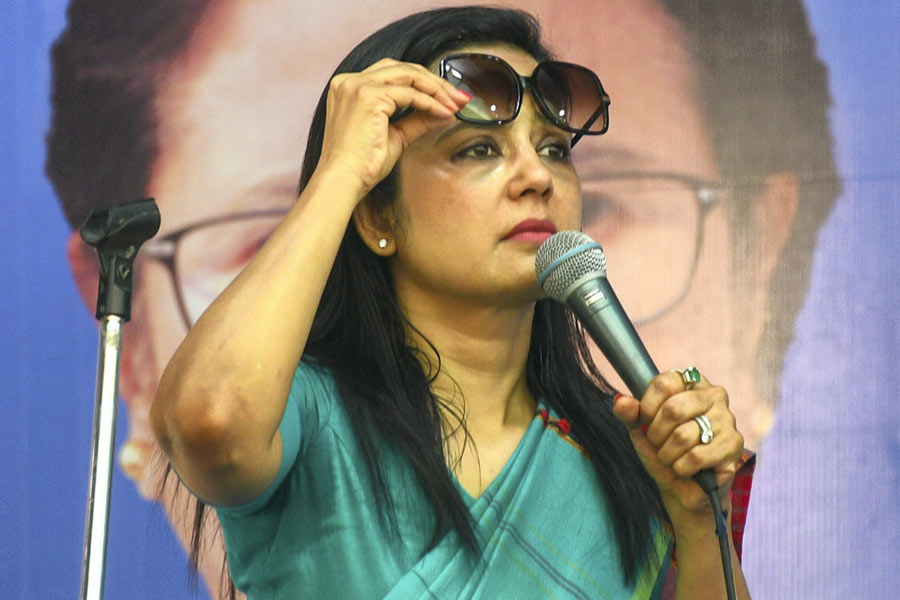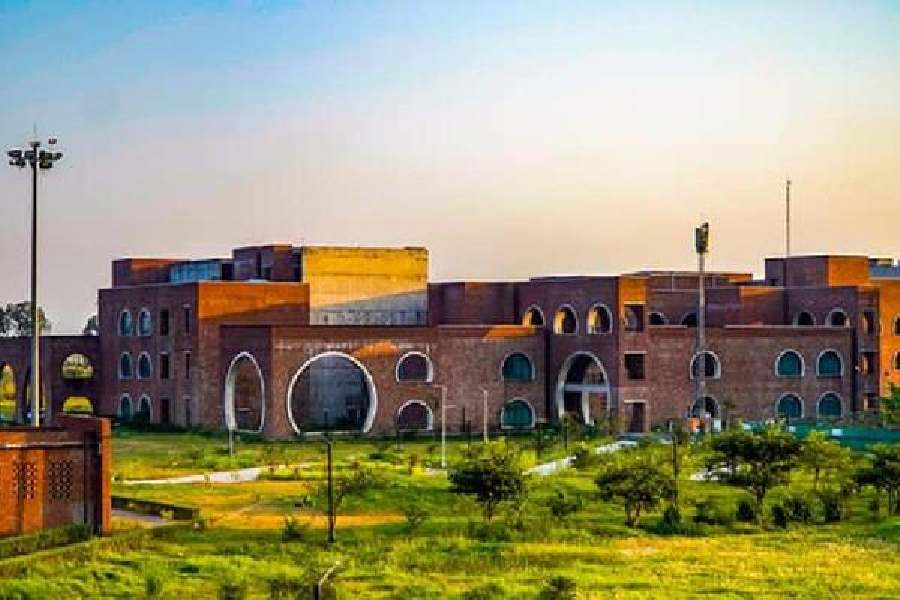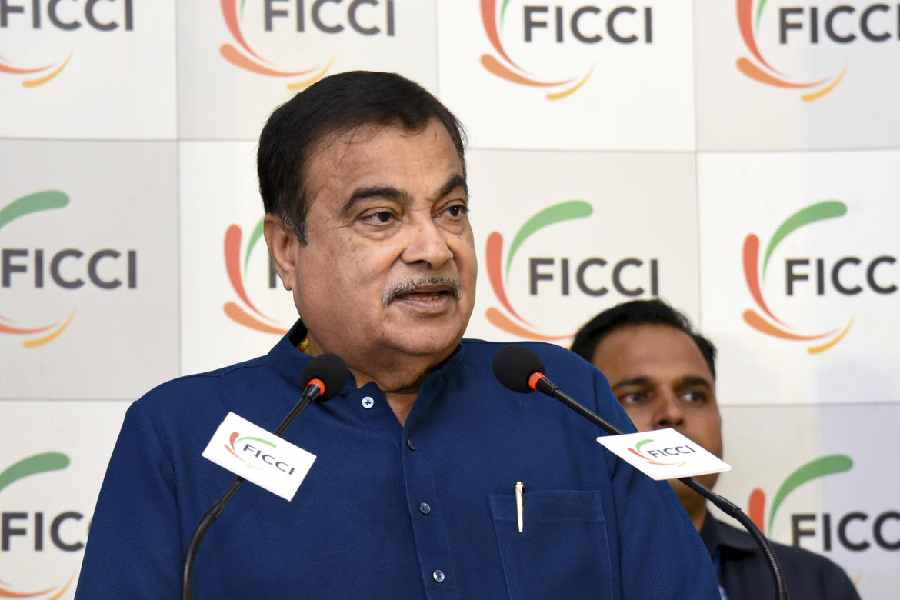 |
| Chief minister Naveen Patnaik reviews the flood monitoring activity at SRC office in Bhubaneswar on Wednesday. Water resources secretary Suresh Mohapatra (left) and special relief commissioner Pradipta Mohapatra brief him about the flood situation. Telegraph picture |
Bhubaneswar, Aug. 6: As vast areas in Cuttack, Jagatsinghpur, Kendrapara and Puri districts battled inundation, the situation threatened to turn worse with water level in the Hirakud reservoir on the Mahanadi rising and Brahmani and Baitarani rivers flowing dangerously.
Official sources said water level in the Hirakud stood at 628.1ft, barely 2ft short of the maximum. The reservoir was discharging 8.35 lakh cusecs of water per second, the highest for the current season, through 50 of its 64 sluice gates, an indication that engineers were struggling to keep the state’s largest dam safe, while trying to minimise the flood threat.
The office of chief minister Naveen Patnaik, who reviewed the situation at the special relief commissioner’s control room here, said that 11.5 lakh cusecs of water will pass through the Mundali barrage in Cuttack tonight. It was likely to rise up to 12 lakh cusecs by tomorrow morning, inundating the low-lying areas in the coastal districts.
Naveen, however, said: “The situation is under control.” So far, 10 lakh persons in 23 districts have been affected by the floods, which have claimed 27 lives. Union home minister Rajnath Singh spoke to Naveen over phone from Delhi and assured all possible help. Singh also promised two helicopters to the state to expedite relief and rescue.
While the waters of the Mahanadi and its tributaries continued to cause havoc at Banki, Athgarh and Tigiria of Cuttack district, Marshaghai and Mahakalpada blocks in Kendrapara and Tirtol in Jagatsinghpur district also reeled from floods. At Kanas in Puri district, Daya, a distributary of the Mahanadi, is playing havoc.
Sources said the floods in the Mahanadi system reflected the failure of engineers to manage the Hirakud reservoir and anticipate the heavy inflow of water into it from the river’s upper catchment area of which around 85 per cent falls in Chhattisgarh. The job of the engineers in charge of the dam, the largest earthen dam in the country, became all the more difficult as it rained heavily both in the upper and lower catchment areas of the river on August 4 and 5.
While the rainfall in the upper catchment area of Mahanadi was 41mm on August 4, it was 75mm in the lower catchment raising fears of floods. On August 5, the rainfall figures for the upper and lower catchment areas of the river were 74mm and 87mm, respectively. It rained around 350mm between August 4 and 5 in Sambalpur town and its adjoining area triggering a deluge.
Chief engineer, Mahanadi upper basin, Biswajit Mohanty, said heavy discharge from the reservoir was the right decision as the Tel river, which was in spate a few days ago, was receding. He said the danger from the Tel having been averted, the gambit of opening 50 gates of Hirakud was expect to pay off by reducing the pressure.
Twenty-four gates of the reservoir were thrown open on August 3, but 19 were closed the next day to prevent complete inundation of Sambalpur town, which was almost floating having experienced 350mm rainfall. “Had we discharged more water from the dam, the water in Sambalpur town would not have found a discharge outlet,” said Mohanty.
On the other hand, the swollen Baitarani was causing havoc in parts of Bhadrak, Jajpur and Keonjhar districts. While Dasrathpur, Jajpur and Korei were the worst affected blocks in Jajpur, Dhamnagar and Chandbali bore the brunt of the floods in Bhadrak. Similarly, Ghasipura and Anandpur suffered the worst in Keonjhar. The state government also remained worried about the rise in the level of the Subarnrekha river, the waters having entered Jaleswar and Baliapal blocks.










